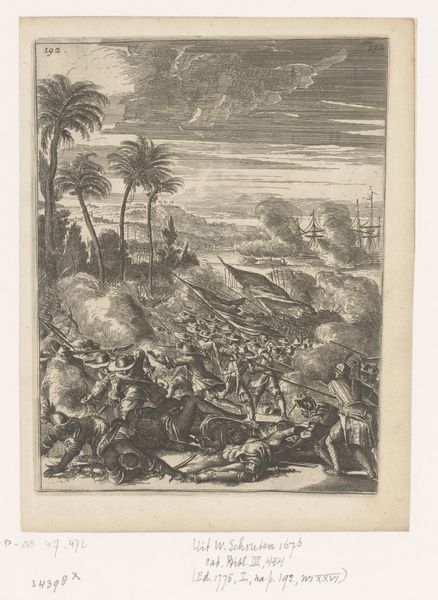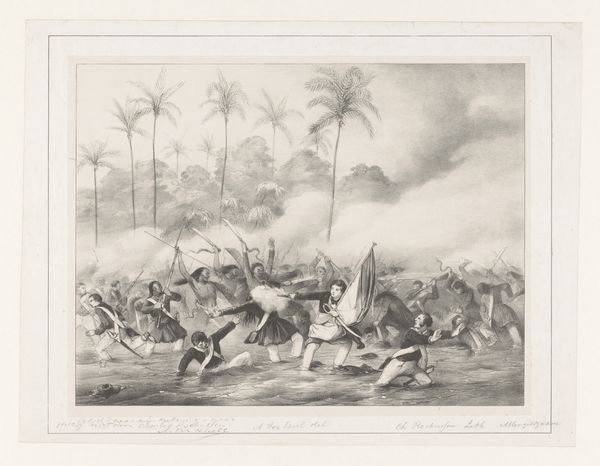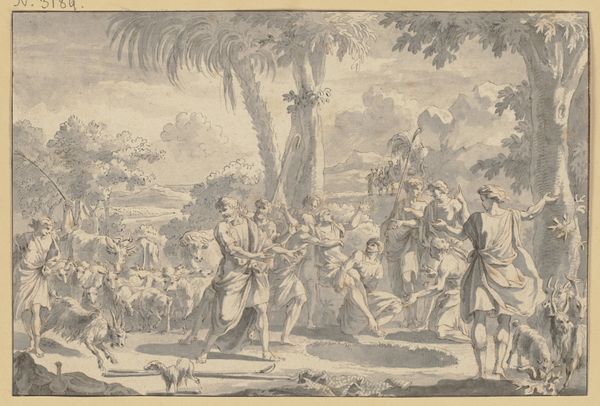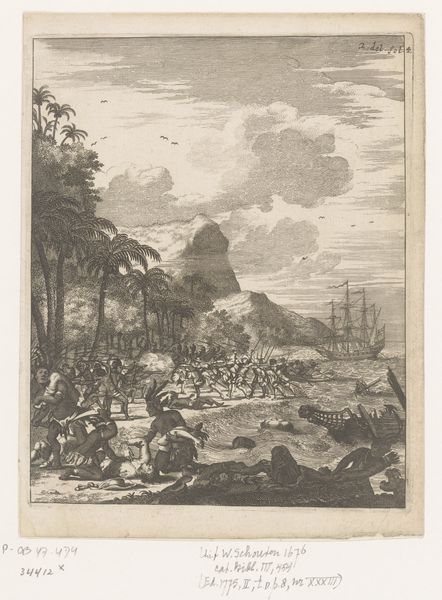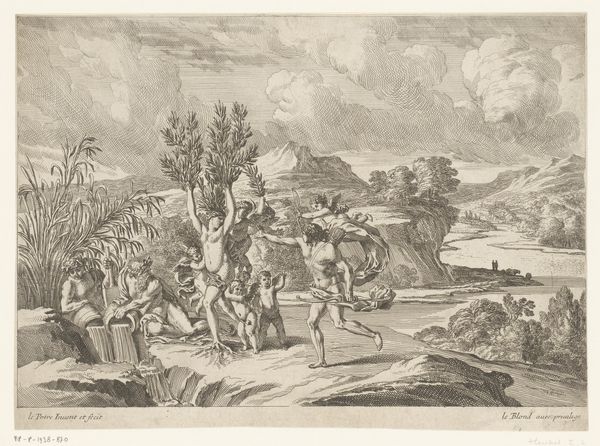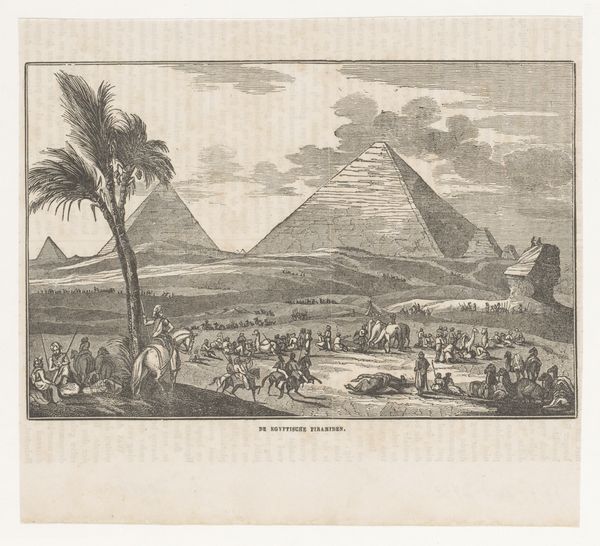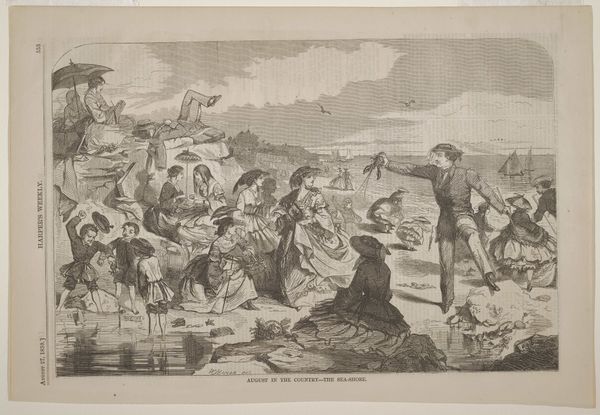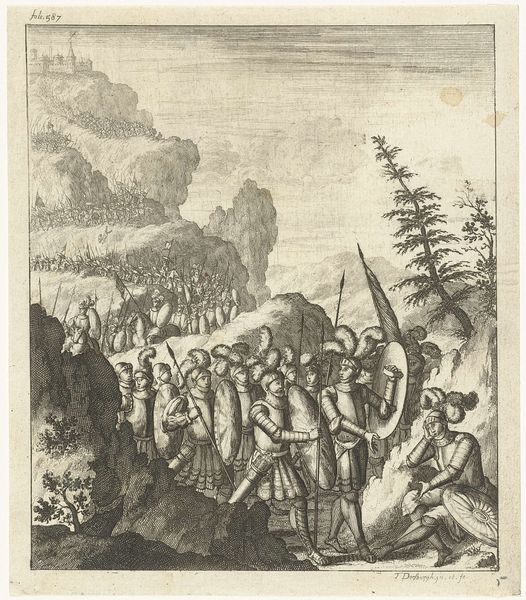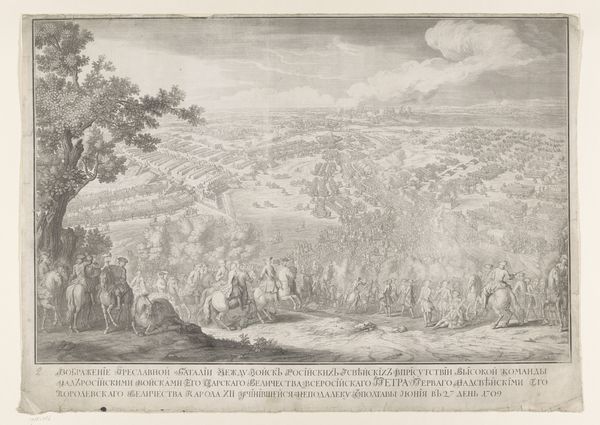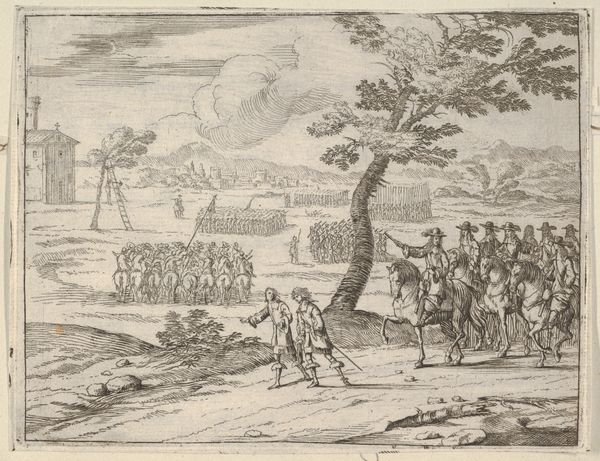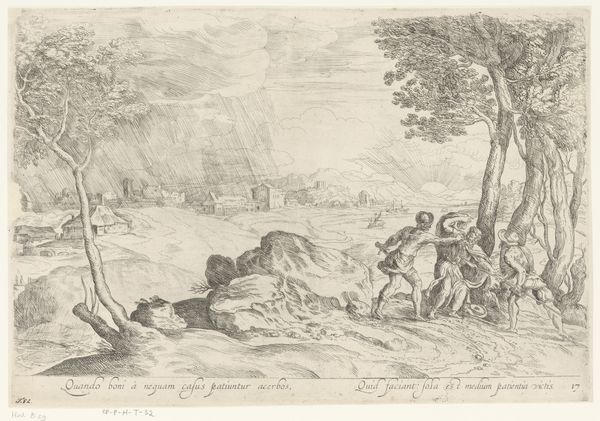
drawing, print, etching, engraving
#
drawing
#
neoclacissism
# print
#
etching
#
landscape
#
figuration
#
history-painting
#
engraving
Dimensions: Sheet: 11 1/4 × 15 5/8 in. (28.6 × 39.7 cm)
Copyright: Public Domain
Editor: We are looking at "The Death of Captain Cook," a print from 1785 by Francesco Bartolozzi. The scene is very dynamic, a clash between Cook's men and native Hawaiians. I'm immediately struck by the stark contrast, literally the light and dark areas, which amplify the chaos. What are your thoughts on the composition, Professor? Curator: The composition is indeed central. Notice how Bartolozzi uses line, particularly in the weapons and the bodies, to direct the viewer's eye. The density of figures creates a kind of tapestry effect, with Captain Cook, seemingly the only light figure, as its focal point. Editor: So Cook is the vanishing point, in a sense? How does the landscape contribute? Curator: Precisely. Observe how the etching and engraving techniques employed establish tonal differences: darkness upstage where the natives mass against the paleness downstage as Cook's men arrive at the beach in small boats. This technique establishes a spatial relationship crucial for an understanding that positions Cook entering into this theater of conflict where he meets his demise. It seems crucial how, by way of its density as material that produces form; the engraving suggests more than simply illustrating this history. Editor: It really does. There's this constant play between detail and broader shapes that feels very deliberate. Do you think there’s any deeper reading of the piece in light of semiotics or structuralism? Curator: Potentially, we could interpret the very material contrasts as mirroring cultural differences. Also the landscape becomes something akin to "nature versus civilisation". Furthermore, how does the formal emphasis placed on "man over nature" challenge earlier depictions when looked in terms like "historical painting", and more explicitly still—neoclassicism itself? These details bring new layers when read with contemporary approaches that acknowledge art forms impact via their composition and the messages such generate—more so considering there exists numerous competing art depicting related episodes during European colonisation Editor: That’s a great point! Focusing on material creates this tension of "otherness" being expressed as just the material from which something consists instead of othering via, say, caricature or symbolism! I'm starting to understand how this reading adds dimension to this neoclassical image. Thanks! Curator: Absolutely! Focusing on those components highlights what can reveal, and obscures depending how approaches paintings or other visual renderings throughout historical contexts when considering them anew!
Comments
No comments
Be the first to comment and join the conversation on the ultimate creative platform.
